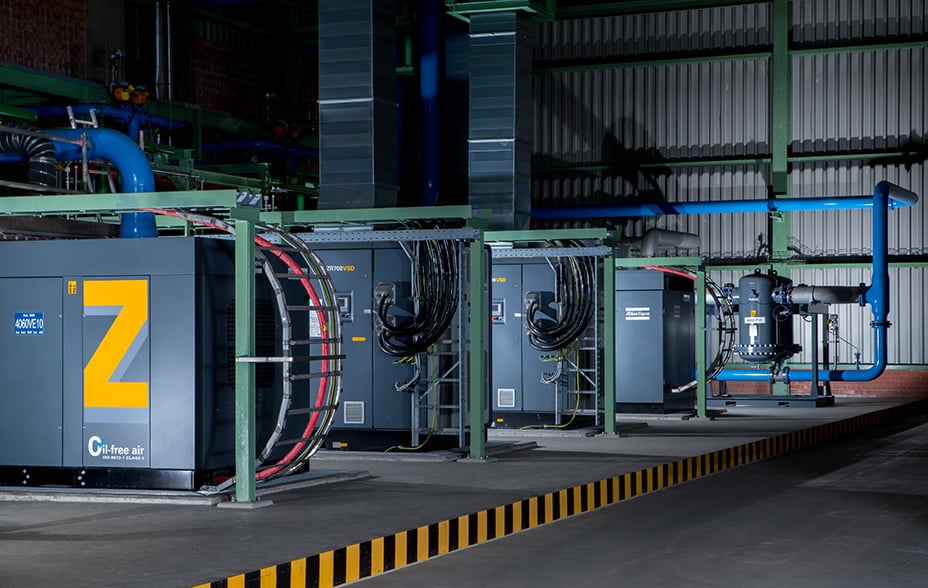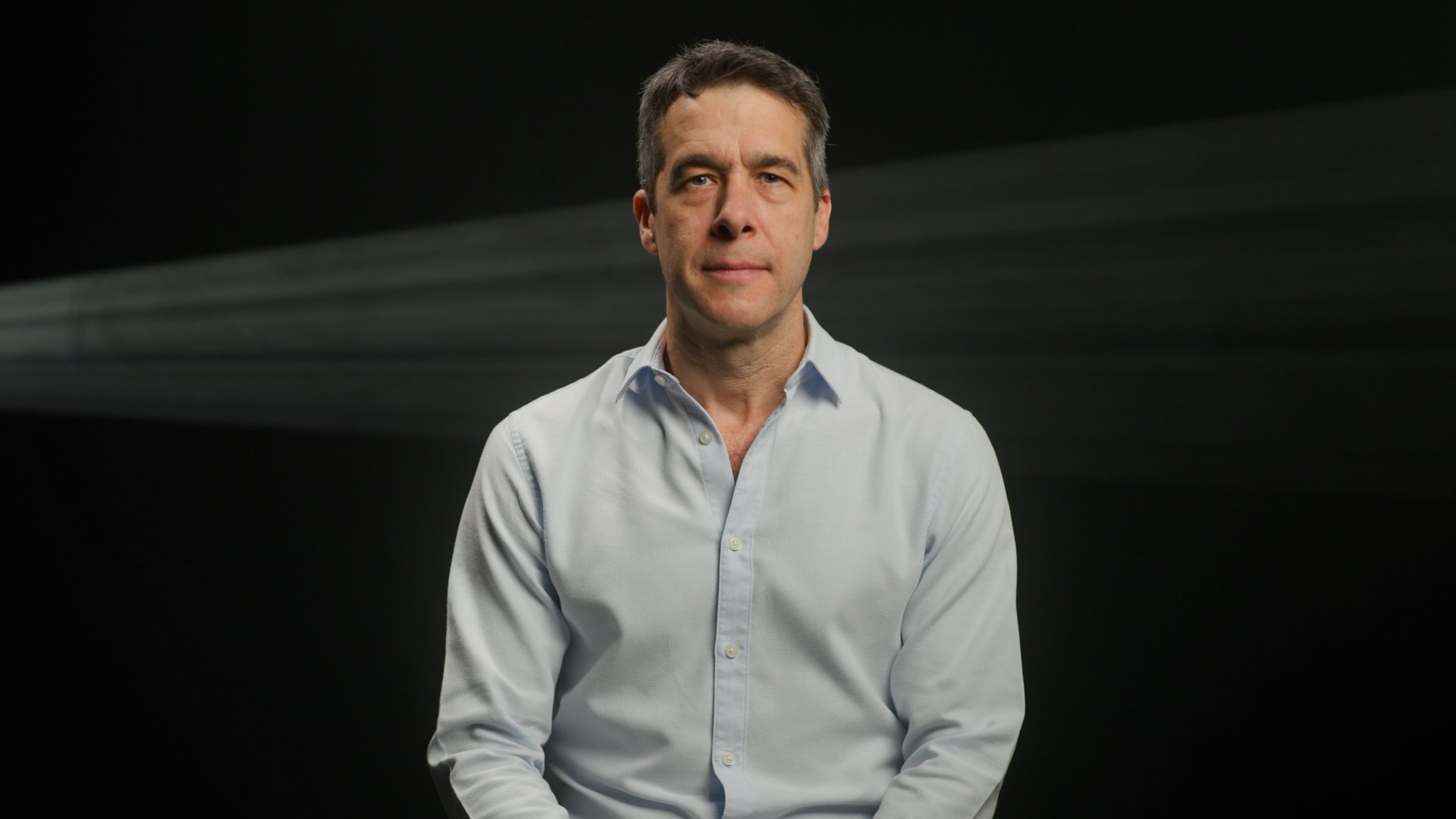
© Angelo D’Amico/Alamy Stock Photo
All investment strategies have the potential for profit and loss, your or your clients’ capital may be at risk.
Our Sustainable Growth Team seeks to invest in companies that are sustainable in both senses of the word, delivering enduring growth by doing enduring good. In the first of two thought pieces, Investment Manager Toby Ross explains why we focus on companies whose growth can endure. He explores the attributes we look for as we strive to identify those very rare firms that can sustain market-beating growth over decades and longer.
I was born in 1984. It was a leap year in which Steve Jobs launched the first Macintosh computer and Tetris was released in the Soviet Union.
That year, Atlas Copco, a Swedish engineering company that is far from a household name, reported a “sharp increase in profits” to 845m Swedish krona (SEK). This was partly due to a “breakthrough in China” as markets opened for its compressors and mining equipment.
While I was awaiting my first birthday cake, some of my predecessors at Baillie Gifford were buying shares for our clients on the back of those prospects. It is still a holding today.
Nearly four decades later, profits have improved to SEK 30bn, a 10 per cent per annum rate (China is over 20 per cent of sales). This does not sound like a lot, but when compounded over long periods, it makes enduring growth companies such as Atlas Copco worth finding. That 35-fold increase in profits has rewarded shareholders with a 650-fold return on their initial investment.
£100 invested in Atlas Copco v MSCI ACWI
Source: Share price, total return, Baillie Gifford & Co.
Past performance is not a guide to future returns.
Our research suggests that the companies with the fastest earnings growth over rolling ten-year periods materially outperform the wider market. That holds regardless of your starting point – whether the heights of the 2000 dot-com bubble peak or the lows of the 2009 bear market trough.
That's why the Sustainable Growth Team seeks to invest in companies that can sustain 10 per cent earnings growth for 10 years, with the resilience to manage through tough times. We invest in companies that are sustainable in both senses of the word: aiming to deliver market-beating growth and making a difference for society over decades.
Enduring growth delivers
Rolling ten-year horizons (1990–2022)
Source: FactSet, Baillie Gifford & Co, MSCI. US dollars.
Rolling ten-year periods starting from 31 December 1990 and ending at 31 December 2022.
The universe consists of all stocks listed in the MSCI ACWI Index at each starting point excluding repetitions.
Quintile- one of five equal measurements that a set of things can be divided into
So what are some of the traits we can look for? Many of the great companies of recent decades share four distinct attributes.
1. Resilience
The first ingredient that you need to deliver enduring growth is resilience.
We tend to be optimists. But if you look ten years out, every company will have had to navigate macroeconomic weakness or a disruptive shift in its industry at some point.
Neither we, nor they, can predict the timing or nature of these shocks. For example, we have yet to meet a company that had planned for the recent Covid-19 pandemic. So, an element of resilience that matters is how nimble the company can be when reacting to these disruptive periods.
Critically, the company needs a strong balance sheet and management that avoids taking short-term measures that could do long-term damage. That includes raising capital at dilutive prices or laying off talented employees you badly want three years later when the recovery is in full swing.
Atlas Copco gives some clues as to the traits that encourage resilience during stressful periods.

© Atlas Copco
One is its business model. The company has made a series of defining choices about where in the value chain it wants to operate and where it can add value.
For instance, it has a bias toward suppliers doing much of the heavy manufacturing of components while it focuses on technology, assembly and service. When circumstances change, it isn’t weighed down by heavy manufacturing plants and it has consistently generated significant amounts of free cash flow.
Another is a decentralised operating structure that allows the people closest to the customer to make decisions and move quickly as markets change. Within Atlas Copco, managers have both autonomy and accountability.
There are other ways that companies can structure themselves to be resilient through adaptability, such as having clear long-term strategic goals that aligned and supportive owners buy into. But many of those we admire most have the ability to pivot quickly built into their DNA.
The Wallenberg family was a strong presence on Atlas Copco’s board in 1984 and remains so today (I’d recommend this recent interview with Peter Wallenberg to give a sense of how engaged the family still is with the company’s operations).
The Wallenbergs measure their investment horizon in decades and help management do the same. They discourage the management team from taking on lots of debt or juicing up short-term earnings, even if some market participants would welcome that.
This advantage of stable ownership is one we can appreciate at Baillie Gifford.
One of the benefits of our multi-generational partnership structure is that the partnership can act as a steadying, Wallenberg-like influence. Investors can continue to focus on delivering strong performance for our clients during volatile periods.
Most companies aren’t as lucky, so we must consider what it is that gives them resilience.
2. Cascades of opportunity
Most forecasts of a company’s growth aren’t sophisticated. Scratch the surface, and they usually start with the company’s projections for the next 2-3 years, based on its current products and pipeline.
The forecaster then nudges these up or down based on how much conviction they have in management and then assumes that growth ‘fades’ down to that of the wider economy over time.
But what’s interesting to the growth investor is a company’s potential to create a cascade of opportunities that expands over time, often going beyond the immediate core products and customers.
These cascades can extend the duration of growth to a far longer window than most people expect in a way that’s hard to model but very powerful.
It can happen in the most unglamorous of businesses. Take Beijer Ref, which began as a refrigeration equipment and parts distributor in Sweden.
This business may not be flashy, but it does have a significant environmental tailwind behind it, helping customers such as supermarkets reduce the environmental impact of nasty refrigerants.
We are interested in Beijer Ref because it has expanded its core business simultaneously in four different directions:
- Geographies: it expanded across the Nordics in the 2000s, into other big European markets in the 2010s, and in the past five years, it has put down roots in Australia, South Africa, South-East Asia and now the US. These all provide starting points for Beijer Ref to deploy more capital.
- Categories: as well as selling refrigeration equipment to its contractor customers, it began selling air conditioning units and then heat pumps, increasing its usefulness to customers.
- Suppliers: by becoming one of the world’s largest distributors, it is now more relevant to a wider range of suppliers who want Beijer Ref to represent them in different markets – allowing the company to offer a broader range to its customers.
- Capabilities: it has developed its manufacturing operations to make some own-brand products, training to help contractors keep up with rising regulatory burdens, and ecommerce capabilities to sell more efficiently.
The key here is that Beijer Ref gets stronger as it scales, becoming more relevant to its suppliers and offering its customers a broader range of products.
The company has many adjacencies it can expand into that build off the same core competencies. If the company sustains 10 per cent growth over the next decade, it will still be a tiny sliver of a vast global industry.
This is just one example, but there are comparable impacts from breakthrough technologies:
- applying mRNA technology, such as seen in Moderna’s Covid-19 vaccine, to entirely new therapeutic areas,
- big changes in how consumers make purchases on ecommerce platforms,
- or dramatic shifts in the cost structure of an industry which enable a different set of customers to get involved (as with renewable energy).
The consistent aspect is that the cascades open second-order opportunities that allow the most agile and successful companies to keep identifying new customers for many years.
These can help answer one of our most challenging questions: five years on, why will this company still be finding material new growth opportunities?
3. Power plays
New opportunities are a useful starting point, but profits come from opportunity combined with what strategist Hamilton Helmer calls “powers”. In 7 Powers, he describes these as “those conditions that create durable differential returns” from “establishing and maintaining an unassailable perch.”
He explains that many aspects of companies’ competitive advantages and good margins can be competed away with time and resources. But "powers" are those elements of a company’s edge that are almost impossible for competitors to recreate, even given time and resources. They confer a benefit to the company (in the form of lower costs or greater value to the customer) and present a barrier to challengers.
Take NVIDIA, the leading supplier of Graphical Processing Units (or GPUs), initially for hard-core gamers but increasingly for the data centres that are driving the explosion in artificial intelligence (AI) applications – 95 per cent of AI models are trained on NVIDIA GPUs.

GPU of NVIDIA Cambridge-1, one of the UK’s most powerful supercomputers. © NVIDIA
There are several reasons that NVIDIA dominates the market for GPUs, but a key one is for the past 15 years, most of the applications run on them have been written on its programming interface, CUDA.
NVIDIA’s experience, patents and scale would make it very challenging for competitors to design chips with the same performance at a lower price. But given that every programmer in this part of the industry (3.5 million) ‘speaks NVIDIA’, it provides a significant additional switching cost for competitors to bridge.
Of course, no company’s strengths last forever: technologies change, competitors evolve and customers’ needs change. Before handing it to Microsoft and Intel on a plate, IBM had enormous power in the personal computer market.
But having real power can allow a company to sustain high levels of profitability for an extended period. This will enable it to reinvest, grow new muscle and stay relevant to its customers as those needs change. The less power a business has, the riskier those transition points are.
Therefore, the question for us is – does this business already have power, and is this clear in the financial outputs?
In some cases, the answer is ‘not yet’, in which case it is important for us to be clear about where we might expect power to emerge as the business develops and how we would tell if this is happening.
4. Purpose-driven people
Finally, the impact of a company’s people on the growth it delivers over long periods will be enormous. Scratch beneath the surface and the difference in the quality of the management teams and the people supporting them will be a key reason that some companies’ growth ends up being in that top quintile, while others end up average or worse.
That’s easy to say with hindsight. But there is a challenge: the pace of executive turnover is rising. Suppose we invest in the average US company for a decade. We will likely be invested alongside two chief executives and two or three chief financial officers, all of whom might have different ideas of priorities.
Our bias is that tenure tends to be longer than average in great companies, and we aim to skew ourselves in this direction. For instance, Atlas Copco’s website proudly lists the twelve chief executives since they were founded in 1873. Long-tenured executives have no incentive to juice up the results for short-term reasons.
But even with long-tenured executives, assessing a company’s people must go well beyond the handful of executives who usually meet investors. We try to understand whether the whole organisation is behind the strategic goals and how effectively it operates.
We must also understand the sense of purpose that motivates the people working there and glues the organisation together.
This is important for two reasons. First, the real purpose (which may not be in the glossy public relations brochures) will likely outlast most people executing the company's mission today. As a long-term investor, it is this purpose that we are investing alongside.
Second, it will be increasingly hard for companies to attract the best talent without a clear purpose aligned with adding real value to society over time.
We see this in our graduate recruitment and hear the same from the leaders of many companies we invest in. However, the purpose needs to be authentic to have a meaningful effect.
There is academic evidence that a more explicit purpose is correlated with stronger corporate performance over time (as expressed in long-term share price appreciation).
For instance, companies in the Great Places to Work survey that scored highest on ‘purpose’ typically performed more strongly over extended periods. Other academics have replicated those results over longer periods and with different data sets.
An excellent example of a company that understands this is Recruit, the Japanese recruitment technology company that owns Indeed.com and Glassdoor.
Its employees rate it in the top 1 per cent of employers on Openwork (a Japanese review platform). It has a reputation as a fantastically entrepreneurial workplace. People are given autonomy and responsibility, encouraged to start new projects and even offered an exit bonus to leave if they are plateauing.
But the company also understands that as the operator of the largest recruitment websites in the world, it has a position of unusual influence in how easily and fairly people find job searching.
There is a company-wide goal to reduce friction and increase the fairness of that process. This is a galvanising goal that helps give people a reason to join and stay with Recruit beyond the financial payoffs.
There are different ways we can try to form views on these:
- reading interviews with management,
- visiting a company to meet a wider cross-section of its employees,
- interviewing former employees and customers,
- consulting third-party platforms, such as Openwork, Glassdoor and Comparably, or tools that aggregate data from them.
In several cases, doing so has helped us form a very different impression of an organisation’s people to the consensus view.
Finding those companies where employees buy into a strong common purpose will help us stack the odds in our favour when looking for enduring growth.
Pinpointing future winners
Considering these four attributes – resilience, cascades of opportunity, power plays and purpose-driven people – can help us get better at pinpointing future winners.
Enduring growth looks different in each company we invest in, meaning we need to cast a wide net and keep an open mind to identify those that can deliver the decades-long returns we seek.
For the Sustainable Growth Team, our ‘net’ is the broader network of our colleagues at Baillie Gifford; they help us access a range of perspectives and ideas. We also deliberately run a relatively flat approach to portfolio construction so that lots of companies can make a difference to the outcome.
But an ‘open mind’ doesn’t just mean being open to new ideas. If there is a final lesson to draw from Atlas Copco, it is that humility is important. Plastered across walls in large letters in many of its offices is the closest thing it has to a company slogan: “there is always a better way.”
| 2019 | 2020 | 2021 | 2022 | 2023 | |
| Sustainable Growth Composite | 5.2 | 29.7 | 53.4 | -45.2 | 12.7 |
| MSCI ACWI | 6.3 | 2.6 | 39.9 | -15.4 | 17.1 |
| 1 year | 5 year | Since inception* | |
| Sustainable Growth Composite | 12.7 | 5.3 | 10.4 |
| MSCI ACWI | 17.1 | 8.6 | 10.0 |
*Inception date: 31 December 2015.
Source: Baillie Gifford & Co and MCSI. USD. Returns have been calculated by reducing the gross return by the highest annual management fee for the composite.
Past performance is not a guide to future returns.
Source: MSCI. MSCI makes no express or implied warranties or representations and shall have no liability whatsoever with respect to any MSCI data contained herein. The MSCI data may not be further redistributed or used as a basis for other indexes or any securities or financial products. This report is not approved, endorsed, reviewed or produced by MSCI. None of the MSCI data is intended to constitute investment advice or a recommendation to make (or refrain from making) any kind of investment decision and may not be relied on as such.
Risk Factors
The views expressed should not be considered as advice or a recommendation to buy, sell or hold a particular investment. They reflect opinion and should not be taken as statements of fact nor should any reliance be placed on them when making investment decisions.
This communication was produced and approved in August 2023 and has not been updated subsequently. It represents views held at the time of writing and may not reflect current thinking.
This communication contains information on investments which does not constitute independent research. Accordingly, it is not subject to the protections afforded to independent research, but is classified as advertising under Art 68 of the Financial Services Act (‘FinSA’) and Baillie Gifford and its staff may have dealt in the investments concerned.
All information is sourced from Baillie Gifford & Co and is current unless otherwise stated.
The images used in this communication are for illustrative purposes only.
Important Information
Baillie Gifford & Co and Baillie Gifford & Co Limited are authorised and regulated by the Financial Conduct Authority (FCA). Baillie Gifford & Co Limited is an Authorised Corporate Director of OEICs.
Baillie Gifford Overseas Limited provides investment management and advisory services to non-UK Professional/Institutional clients only. Baillie Gifford Overseas Limited is wholly owned by Baillie Gifford & Co. Baillie Gifford & Co and Baillie Gifford Overseas Limited are authorised and regulated by the FCA in the UK.
Persons resident or domiciled outside the UK should consult with their professional advisers as to whether they require any governmental or other consents in order to enable them to invest, and with their tax advisers for advice relevant to their own particular circumstances.
Financial Intermediaries
This communication is suitable for use of financial intermediaries. Financial intermediaries are solely responsible for any further distribution and Baillie Gifford takes no responsibility for the reliance on this document by any other person who did not receive this document directly from Baillie Gifford.
Europe
Baillie Gifford Investment Management (Europe) Limited provides investment management and advisory services to European (excluding UK) clients. It was incorporated in Ireland in May 2018. Baillie Gifford Investment Management (Europe) Limited is authorised by the Central Bank of Ireland as an AIFM under the AIFM Regulations and as a UCITS management company under the UCITS Regulation. Baillie Gifford Investment Management (Europe) Limited is also authorised in accordance with Regulation 7 of the AIFM Regulations, to provide management of portfolios of investments, including Individual Portfolio Management (‘IPM’) and Non-Core Services. Baillie Gifford Investment Management (Europe) Limited has been appointed as UCITS management company to the following UCITS umbrella company; Baillie Gifford Worldwide Funds plc. Through passporting it has established Baillie Gifford Investment Management (Europe) Limited (Frankfurt Branch) to market its investment management and advisory services and distribute Baillie Gifford Worldwide Funds plc in Germany. Similarly, it has established Baillie Gifford Investment Management (Europe) Limited (Amsterdam Branch) to market its investment management and advisory services and distribute Baillie Gifford Worldwide Funds plc in The Netherlands. Baillie Gifford Investment Management (Europe) Limited also has a representative office in Zurich, Switzerland pursuant to Art. 58 of the Federal Act on Financial Institutions (“FinIA”). The representative office is authorised by the Swiss Financial Market Supervisory Authority (FINMA). The representative office does not constitute a branch and therefore does not have authority to commit Baillie Gifford Investment Management (Europe) Limited. Baillie Gifford Investment Management (Europe) Limited is a wholly owned subsidiary of Baillie Gifford Overseas Limited, which is wholly owned by Baillie Gifford & Co. Baillie Gifford Overseas Limited and Baillie Gifford & Co are authorised and regulated in the UK by the Financial Conduct Authority.
Hong Kong
Baillie Gifford Asia (Hong Kong) Limited 柏基亞洲(香港)有限公司 is wholly owned by Baillie Gifford Overseas Limited and holds a Type 1 and a Type 2 license from the Securities & Futures Commission of Hong Kong to market and distribute Baillie Gifford’s range of collective investment schemes to professional investors in Hong Kong. Baillie Gifford Asia (Hong Kong) Limited 柏基亞洲(香港)有限公司 can be contacted at Suites 2713-2715, Two International Finance Centre, 8 Finance Street, Central, Hong Kong. Telephone +852 3756 5700.
South Korea
Baillie Gifford Overseas Limited is licensed with the Financial Services Commission in South Korea as a cross border Discretionary Investment Manager and Non-discretionary Investment Adviser.
Japan
Mitsubishi UFJ Baillie Gifford Asset Management Limited (‘MUBGAM’) is a joint venture company between Mitsubishi UFJ Trust & Banking Corporation and Baillie Gifford Overseas Limited. MUBGAM is authorised and regulated by the Financial Conduct Authority.
Australia
Baillie Gifford Overseas Limited (ARBN 118 567 178) is registered as a foreign company under the Corporations Act 2001 (Cth) and holds Foreign Australian Financial Services Licence No 528911. This material is provided to you on the basis that you are a “wholesale client” within the meaning of section 761G of the Corporations Act 2001 (Cth) (“Corporations Act”). Please advise Baillie Gifford Overseas Limited immediately if you are not a wholesale client. In no circumstances may this material be made available to a “retail client” within the meaning of section 761G of the Corporations Act.
This material contains general information only. It does not take into account any person’s objectives, financial situation or needs.
South Africa
Baillie Gifford Overseas Limited is registered as a Foreign Financial Services Provider with the Financial Sector Conduct Authority in South Africa.
North America
Baillie Gifford International LLC is wholly owned by Baillie Gifford Overseas Limited; it was formed in Delaware in 2005 and is registered with the SEC. It is the legal entity through which Baillie Gifford Overseas Limited provides client service and marketing functions in North America. Baillie Gifford Overseas Limited is registered with the SEC in the United States of America.
The Manager is not resident in Canada, its head office and principal place of business is in Edinburgh, Scotland. Baillie Gifford Overseas Limited is regulated in Canada as a portfolio manager and exempt market dealer with the Ontario Securities Commission ('OSC'). Its portfolio manager licence is currently passported into Alberta, Quebec, Saskatchewan, Manitoba and Newfoundland & Labrador whereas the exempt market dealer licence is passported across all Canadian provinces and territories. Baillie Gifford International LLC is regulated by the OSC as an exempt market and its licence is passported across all Canadian provinces and territories. Baillie Gifford Investment Management (Europe) Limited (‘BGE’) relies on the International Investment Fund Manager Exemption in the provinces of Ontario and Quebec.
Israel
Baillie Gifford Overseas is not licensed under Israel’s Regulation of Investment Advising, Investment Marketing and Portfolio Management Law, 5755-1995 (the Advice Law) and does not carry insurance pursuant to the Advice Law. This material is only intended for those categories of Israeli residents who are qualified clients listed on the First Addendum to the Advice Law.
Ref: 50116 10030814





